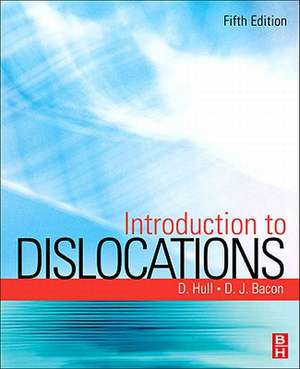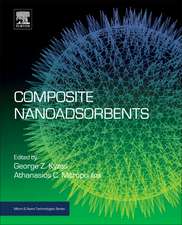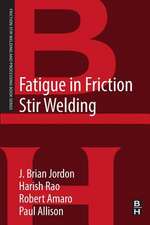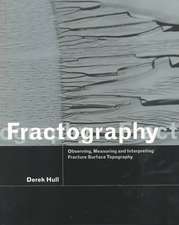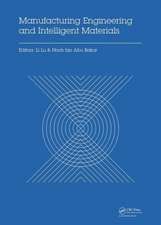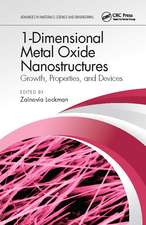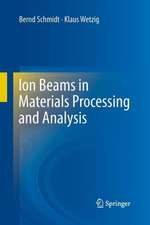Introduction to Dislocations
Autor Derek Hull, D. J. Baconen Limba Engleză Paperback – 18 feb 2011
- Long-established academic reference by an expert author team, highly regarded for their contributions to the field.
- Uses minimal mathematics to present theory and applications in a detailed yet easy-to-read manner, making this an understandable introduction to a complex topic.
- Unlike the main competition, this new edition includes recent developments in the subject and up-to-date references to further reading and research sources.
Preț: 328.44 lei
Preț vechi: 414.45 lei
-21% Nou
Puncte Express: 493
Preț estimativ în valută:
62.85€ • 65.79$ • 52.00£
62.85€ • 65.79$ • 52.00£
Carte tipărită la comandă
Livrare economică 29 martie-12 aprilie
Livrare express 01-07 martie pentru 121.18 lei
Preluare comenzi: 021 569.72.76
Specificații
ISBN-13: 9780080966724
ISBN-10: 0080966721
Pagini: 272
Ilustrații: Approx. 100 illustrations
Dimensiuni: 191 x 235 x 18 mm
Greutate: 0.45 kg
Ediția:5. Auflage.
Editura: ELSEVIER SCIENCE
ISBN-10: 0080966721
Pagini: 272
Ilustrații: Approx. 100 illustrations
Dimensiuni: 191 x 235 x 18 mm
Greutate: 0.45 kg
Ediția:5. Auflage.
Editura: ELSEVIER SCIENCE
Public țintă
Advanced undergraduate and graduate students taking dislocations, mechanical properties, mechanisms of deformation and fracture, and properties of materials courses as part of broader mechanical engineering and materials science curricula; Industry and academic researchers in the subjects listed above.Cuprins
1. Defects in Crystals
2. Observation of Dislocations
3. Movement of Dislocations
4. Elastic Properties of Dislocations
5. Dislocations in Face-centered Cubic Metals
6. Dislocations in Other Crystal Structures
7. Jogs and the Intersection of Dislocations
8. Origin and Multiplication of Dislocations
9. Dislocation Arrays and Crystal Boundaries
10. Strength of Crystalline Solids
2. Observation of Dislocations
3. Movement of Dislocations
4. Elastic Properties of Dislocations
5. Dislocations in Face-centered Cubic Metals
6. Dislocations in Other Crystal Structures
7. Jogs and the Intersection of Dislocations
8. Origin and Multiplication of Dislocations
9. Dislocation Arrays and Crystal Boundaries
10. Strength of Crystalline Solids
Recenzii
"The authors have taken an already exemplary textbook and ensured that it is both up-to-date and manageable. The carefully chosen bibliography sections at the end of every chapter are invaluable. There is no alternative book on dislocation theory that covers the ground of this volume and there does not need to be." --Materials World Magazine, October 2012
"This book fits a very much needed slot as it is written at a level that is much easier to understand than the classic old texts on dislocations...and is, for that reason, ideal for both undergraduates and beginning or interdisciplinary graduate students." --Kevin J. Hemker, Professor and Chair of Mechanical Engineering, Johns Hopkins University
"One of the most striking advantages of the book is the concise and lucid text...There are many books dealing with dislocations but only one up-to-date introduction. It is warmly recommended to teachers and students in solid state sciences" --Crystallization Technology
"As we grow older, we tend to grow fatter but wiser. This is certainly the case of the 4th edition of 'Introduction to Dislocations'...the book is excellent value and there is no excuse why every student of metallurgy should not be familiar with its contents, and every researcher have it readily to hand." --Steel Times
"This book fits a very much needed slot as it is written at a level that is much easier to understand than the classic old texts on dislocations...and is, for that reason, ideal for both undergraduates and beginning or interdisciplinary graduate students." --Kevin J. Hemker, Professor and Chair of Mechanical Engineering, Johns Hopkins University
"One of the most striking advantages of the book is the concise and lucid text...There are many books dealing with dislocations but only one up-to-date introduction. It is warmly recommended to teachers and students in solid state sciences" --Crystallization Technology
"As we grow older, we tend to grow fatter but wiser. This is certainly the case of the 4th edition of 'Introduction to Dislocations'...the book is excellent value and there is no excuse why every student of metallurgy should not be familiar with its contents, and every researcher have it readily to hand." --Steel Times
